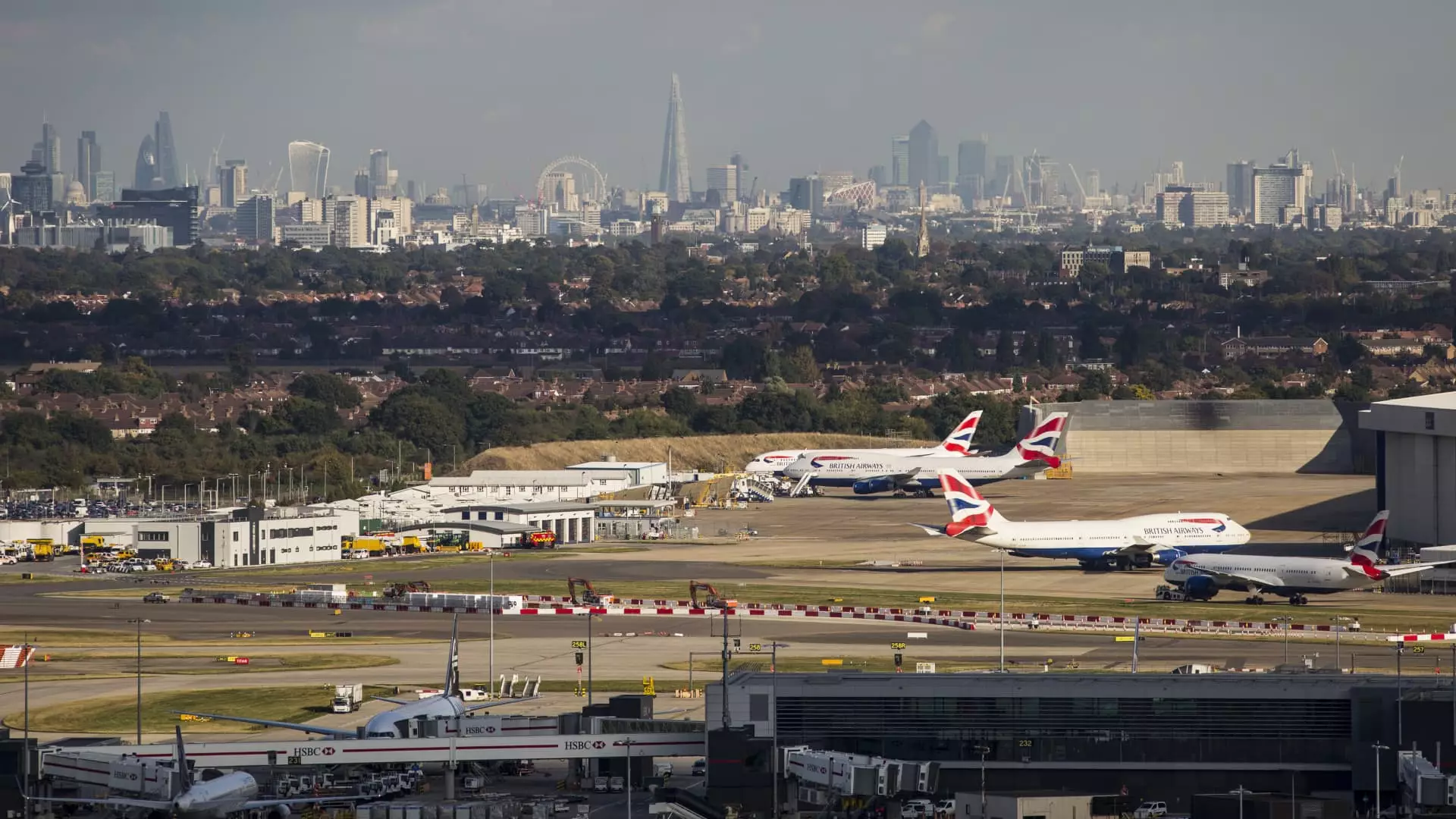As Heathrow Airport strives to address burgeoning passenger demand, its chief executive, Thomas Woldbye, has publicly committed to urging the U.K. government for a concrete decision by the close of 2025 regarding the construction of a third runway. During the Airlines 2024 conference, Woldbye articulated a clear need for additional capacity, emphasizing that expansion aligns with the government’s broader economic growth objectives and industrial strategies. However, the path to expansion proves challenging, marred by a history of opposition and fierce public debate.
Woldbye’s insistence that “Heathrow is running out of capacity” underscores the pressing nature of this issue. Currently, the airport can service around 90 million passengers annually, and without a third runway, it risks reaching its operational limits. The complexity of this situation is not merely an issue for Heathrow Airport executives; it implicates various stakeholders, including airlines, local communities, and government officials. The decision-making process regarding infrastructure projects in the U.K. is cumbersome, requiring consensus among all parties involved.
Woldbye noted that encouraging dialogue and collaboration is essential, asserting, “If the U.K. does not want a runway, why would it be built?” His remarks encapsulate the multifaceted challenges involved in major infrastructure projects—the need for both support and funding from the government as well as public acceptance. While Woldbye remains optimistic about renewed discussions with the new Labour administration, he acknowledges the difficulty of navigating the labyrinth of public opinion and regulatory frameworks.
The proposal for the third runway, described as one of the largest infrastructure undertakings in U.K. history, has faced increasing scrutiny over the years. The lessons learned from previous hurdles are crucial. The chief executive emphasized earlier today that the technical and logistical aspects of building the runway are understood, and he seeks affirmation from the government before progressing. “We have to ask the government, are you along for the journey?” he queried, underscoring the necessity for a unified approach.
Amid existing calls for expansion, environmental groups, such as Friends of the Earth, vigorously oppose the project, citing its potential to escalate greenhouse gas emissions, impact local wildlife, and exacerbate noise pollution in residential neighborhoods. These concerns are pivotal to shaping public sentiment and the framework of the legal and regulatory review processes that any project must navigate.
Transport Secretary Louise Haigh, present at the conference, echoed this sentiment, stating, “I will always support airport expansion as long as it grows our economy and meets our environmental commitments.” This remark highlights the delicate balancing act that policy-makers and businesses must engage in, addressing demands for growth while simultaneously committing to environmental responsibility. The social contract between economic advancement and ecological preservation remains a contentious battleground within the spectrum of opinions on infrastructure projects.
In the context of a post-pandemic recovery, which saw travel numbers at Heathrow rebound from 62 million in 2022 to a staggering 79 million in 2023, the demand for expanded flight services is palpable. Airlines have vehemently lobbied for increased capacity, reflecting frustrations with competition and the costs associated with securing coveted slots within one of Europe’s busiest airports. The tension between facilitating economic progress and addressing an expansive range of stakeholder concerns remains at the forefront of the discourse surrounding Heathrow’s future.
The future expansion proposals—including the addition of a new terminal and increased annual flight caps—hint at the airport’s ambition to accommodate the swelling tide of air travel. The earlier projections for the proposed runway, which involve substantial logistical undertakings, were designed to enhance efficiency and better manage the anticipated influx in passenger and cargo traffic. However, it is clear that the framework for realizing such plans will demand intricate negotiations with various stakeholders and adherence to legal requirements.
Ultimately, the outcome for Heathrow’s proposed expansion—and by extension, the future of air travel in the U.K.—rests in the hands of policymakers and the public. Woldbye’s candid acknowledgment of the complexities of transportation strategy reflects a nuanced understanding of the myriad factors at play. As discussions evolve, the pressing question remains: Can the U.K. successfully balance the drives for economic growth alongside necessary environmental commitments? The fate of the much-contested third runway will not only shape the fate of Heathrow but also set precedents for future infrastructure endeavors across the nation.


Leave a Reply